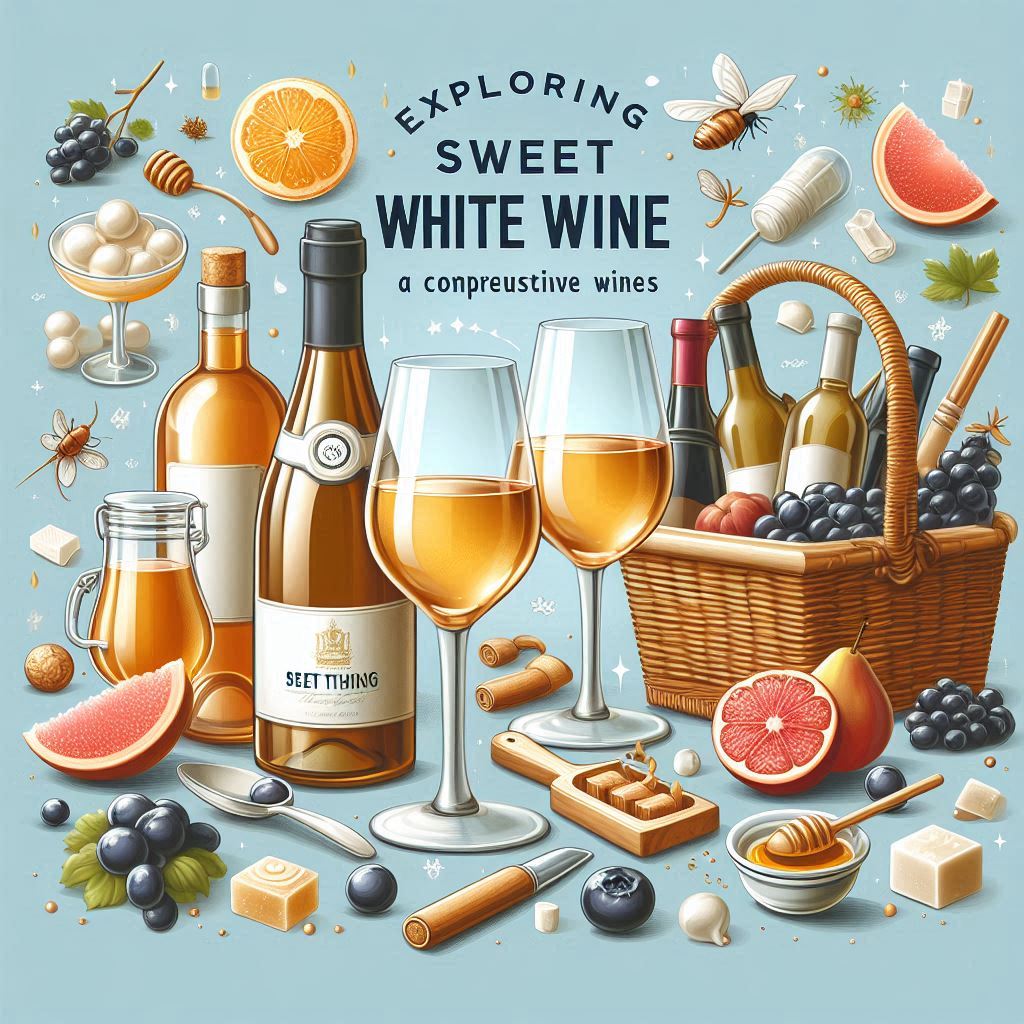
Sweet white wines captivate wine fans with their lush flavors, fresh profiles, and flexibility. Whether you are a amateur eager to explore or a seasoned gourmand refining your palate, facts candy white wines opens a world of delightful reviews. This article dives into their characteristics, pairing strategies, selection suggestions, and more, supplying actionable insights for all ranges of wine lovers.
What Are Sweet White Wines?
Sweet white wines are crafted from white grape sorts and maintain higher residual sugar tiers after fermentation, ensuing in a quite sweet taste. Unlike dry white wines, wherein maximum sugar is transformed to alcohol, candy whites stability sweetness with acidity, developing a harmonious taste profile. Popular sorts include Riesling, Moscato, Gewürztraminer, and Sauternes, every presenting precise aromas and textures.
“Sweet white wines are like a symphony of flavors, wherein sugar, acid, and fruit notes dance together to create some element actually memorable.”
– Emma Carter, Sommelier
The sweetness level can range, from lightly candy (off-dry) to intensely sweet dessert wines. Winemakers obtain this via techniques like past due harvesting, noble rot, or halting fermentation early to maintain sugar. Understanding the ones techniques helps you recognize the craftsmanship at the back of every bottle.

Why Choose Sweet White Wines?
Sweet white wines are approachable and flexible, making them best for diverse occasions. Their sweetness appeals to novices who may additionally locate dry wines too sharp, while their complexity intrigues skilled drinkers. They’re ideal for:
- Pairing with Food: Their sweetness enhances highly spiced dishes, salty cheeses, or rich cakes.
- Social Gatherings: Their crowd-attractive nature suits informal activities or celebrations.
- Sipping Solo: Their sparkling first rate makes them exciting on their very very own.
For beginners, beginning with a Moscato or off-dry Riesling can ease you into wine appreciation. For experts, exploring botrytized wines like Tokaji Aszú gives a deeper dive into nuanced flavors.
How to Select the Best Sweet White Wines
Choosing a quality sweet white wine involves expertise labels, regions, and your taste preferences. Here are actionable recommendations:
- Read the Label for Sweetness Indicators: Look for phrases like “Spätlese” (past due harvest) for Riesling or “Doux” for French wines, which suggest sweeter styles. Alcohol content material also can hint at sweetness—lower alcohol (eight-eleven%) regularly method better residual sugar.
- Explore Reputable Regions: German Rieslings from Mosel, French Sauternes from Bordeaux, and Italian Moscato d’Asti are famend for satisfactory.
- Consider Your Palate: Prefer mild and fizzy? Try Moscato. Want wealthy and honeyed? Opt for a Sauternes.
- Check Vintage and Producer: Research producers known for constant nice, like Dr. Loosen for Riesling or Château d’Yquem for Sauternes.
For beginners, ask sommeliers or store workforce for hints inside your finances. Experienced customers can seek constrained-launch dessert wines for precise tasting reports.
Pairing Sweet White Wines with Food
Sweet white wines shine while paired thoughtfully. Their sweetness balances formidable flavors, improving each the wine and the dish. Consider these pairings:
- Spicy Cuisine: An off-dry Riesling tempers the warmth of Thai or Indian dishes, with its acidity slicing thru wealthy sauces.
- Cheese Platters: Pair Gewürztraminer with blue cheese or Moscato with creamy brie for a delightful contrast.
- Desserts: Sauternes with crème brûlée or Tokaji with fruit tarts elevates dessert courses.
- Savory Dishes: Try Moscato with salty prosciutto or foie gras for a sweet-salty harmony.
“The magic of sweet white wines lies in their ability to transform a meal, balancing bold flavors with effortless grace.”
– Chef Maria Lopez, Culinary Expert
Experiment with pairings to discover personal favorites. Keep sweetness levels in mind—match lighter wines with delicate dishes and richer wines with decadent ones.
Table: Popular Sweet White Wines and Their Characteristics
|
Wine Type |
Sweetness Level |
Key Flavors |
Best Food Pairings |
Notable Regions |
|---|---|---|---|---|
|
Moscato |
Light to Medium |
Peach, Orange Blossom, Honey |
Spicy Asian, Soft Cheeses |
Piedmont, Italy |
|
Riesling (Off-Dry) |
Light to Medium |
Apple, Citrus, Apricot |
Thai, Indian, Salty Snacks |
Mosel, Germany |
|
Gewürztraminer |
Medium |
Lychee, Rose, Ginger |
Blue Cheese, Spicy Curries |
Alsace, France |
|
Sauternes |
High |
Honey, Apricot, Vanilla |
Foie Gras, Crème Brûlée |
Bordeaux, France |
|
Tokaji Aszú |
High |
Caramel, Dried Fruit, Saffron |
Fruit Tarts, Roquefort Cheese |
Tokaj, Hungary |
This table organizes key information to help you choose wines based on flavor profiles and pairing potential, catering to both novice and expert readers.

Storing and Serving Sweet White Wines
Proper storage and serving enhance your sweet white wine experience. Follow these tips:
- Storage: Store bottles horizontally in a cool (50-fifty five°F), dark location to hold freshness. Avoid temperature fluctuations.
- Serving Temperature: Serve lighter wines like Moscato at 45-50°F and richer ones like Sauternes at 50-fifty 5°F for ultimate taste.
Glassware: Use smaller, tulip-formed glasses to pay interest aromas, mainly for dessert wines. - Decanting: Most candy whites don’t require decanting, but older Sauternes might also benefit from 20-half-hour to open up.
For beginners, put money into a simple wine refrigerator for consistent storage. Experienced enthusiasts can explore aging capacity—super Sauternes or Tokaji can broaden complex flavors over many years.
Exploring Sweet White Wines on a Budget
Quality sweet white wines don’t always require a hefty budget. Here’s how to enjoy them affordably:
-
Seek Value Regions: Look for Moscatos from Italy’s Piedmont or Rieslings from Washington State, which offer great quality at lower prices.
-
Buy in Bulk: Purchase cases during sales at local wine shops or online retailers for discounts.
-
Join Wine Clubs: Many offer curated selections, including sweet whites, at member-only prices.
- Try Lesser-Known Varieties: Chenin Blanc from South Africa or Vouvray from Loire Valley presents candy profiles at budget-friendly charges.”You don’t want to lay our a fortune to revel in candy white wines—smart alternatives and exploration discover gemstones at every price factor.”
– Liam Foster, Wine Retail Specialist
Practical Advice to Get Started
Ready to dive into candy white wines? Start by using sampling a few types, like a Moscato and an off-dry Riesling, to become aware of your choices. Visit local wine shops or attend tastings to develop your information. Keep a tasting magazine to observe flavors, pairings, and producers you like. For seasoned fanatics, don’t forget hosting a sweet white wine tasting birthday party, proposing a variety of patterns from light to dessert wines, to deepen your appreciation.

FAQ: Common Questions About Sweet White Wines
Q: Are candy white wines most effective for dessert?
A: No, they’re flexible! While some, like Sauternes, pair rather with cakes, others, like off-dry Riesling, supplement savory or as a substitute spiced dishes.
Q: How can I tell if a wine is sweet without tasting it?
A: Check the label for terms like “sweet,” “doux,” or “Spätlese,” and word the alcohol content—decrease chances frequently recommend sweeter wines.
Q: Can candy white wines age properly?
A: Yes, superb ones like Sauternes or Tokaji can age for many years, developing richer, more complex flavors.
Q: Are sweet white wines beginner-friendly?
A: Absolutely! Their approachable sweetness makes them best for those new to wine, with Moscato being a splendid place to begin.
By exploring candy white wines with these techniques, you’ll unencumber a international of flavors and elevate your wine adventure. Cheers to candy discoveries!



1 thought on “Exploring Sweet White Wines: A Comprehensive Guide in 2025”